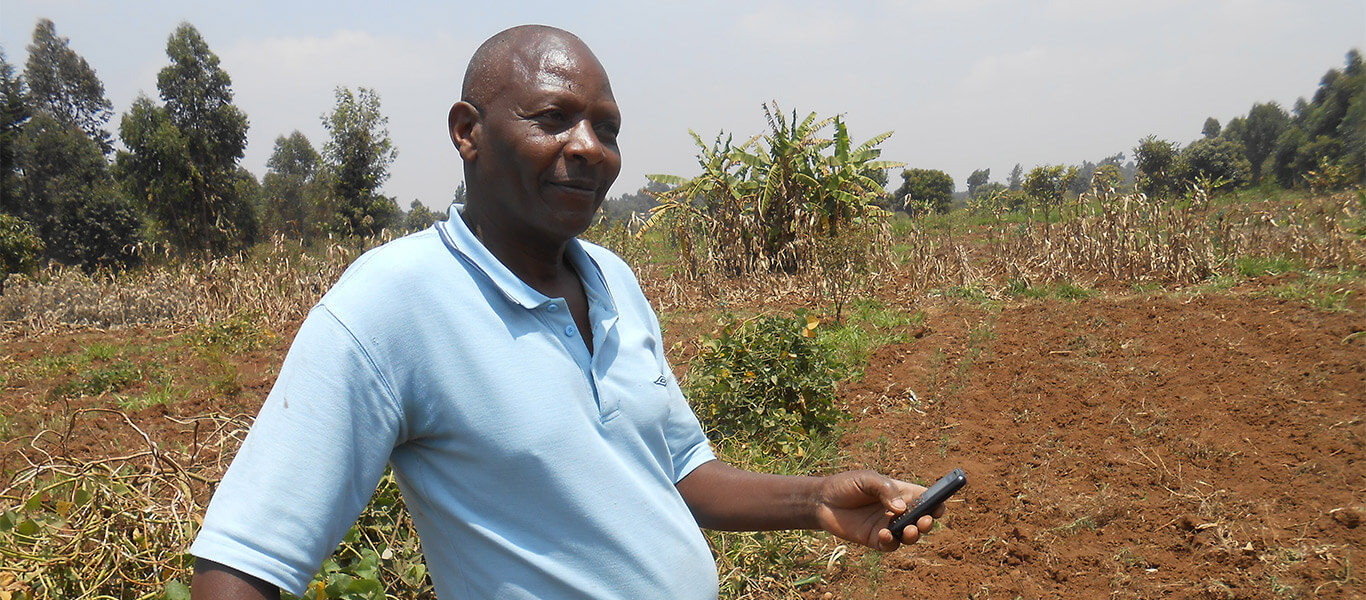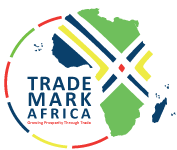Enriching farmers through mobile information.
George Karari, 56, is a Kenyan smallholder farmer living in the rural area of Kikuyu, on the outskirts of Nairobi. He farms four and half acres of mostly maize and potatoes for home consumption and as a cash crop.
George grew up in a farming community and learnt the ways of the soil from his mother. Like many farmers in Africa, over the years his crops have been subject to the vagaries of weather, climate, soil, disease and market prices, leaving George to support his wife and six children in shifting economic circumstances. He learnt from experience, from other farmers and from government education programmes, but often the information came after the event – too late to prevent late planting or a poor harvest.
In March 2015, George signed up to a new, free mobile information service for farmers, called ‘iShamba’, (the Swahili word, shamba, means garden or farm). The idea was simple: to allow farmers to subscribe to mobile information on two crops, or livestock, on which they would receive weekly text messages, with vital facts to assist them in getting the most out of their products. George subscribes to maize and potato help lines, which send him up-to-date, weather information (straight from aWhere.com, a digital platform offering weather information based on accurate data) and market prices supplied by the National Farmers Information Service. In addition, George receives farming tips through text messages aligned to his two crops, the season, and to the region in which he farms.
The weather advice may tell George that the rainy season will start in two weeks, giving him a chance to prepare his soil and start planting. The agronomy tips will give him advice on the best way to plant his maize or potatoes and will follow up with regular tips through to harvesting, post harvesting and storage. Once it is time to sell the crop, the market prices that iShamba sends will guide George when he negotiates a selling price.
“Before iShamba, I used to walk to the market centres and ask around to find out prices”, says George. “Today, I get them on my phone. By the time I am going to the market I know the prices. It helps me determine my products costs.”
iShamba is accompanied by a sophisticated digital platform allowing farmers to ask a question in a text message, which is translated onto the digital platform where agronomy experts receive and answer it. Equally, farmers can phone straight in to the iShamba call centre, manned by specialist staff, with their questions.
“Whenever I have a problem I call the centre”, affirms George. “It’s quite amazing. Before, I tried to get information from extension services, but I could not always get it immediately, at the right time.”
Answering hundreds and thousands of questions
The concept of iShamba was born out of necessity, emanating from a Kenyan reality TV and Radio farm-make-over programme called ‘Shamba Shape Up’. In weekly episodes Shamba Shape Up visits farmers around the country, advising on better farming practices. At the end of the show viewers are invited to write in for more information, which is sent out in a leaflet format.
David Campbell is a director of The Mediae Company, which produces Shamba Shape Up. He has worked in the agricultural communications sector for over 30 years. “Two hundred and fifty thousand people request leaflets after every episode”, he explains. “Then we started getting questions by text message, hundreds and thousands of questions. We answered them, or we put them on a website. We looped in our partners to answer what we could not. We felt there was a need for a platform where farmers could interact with us and get answers to their questions, within 24 hours, in text message form.”
To get iShamba off the ground, in 2014 The Mediae Company applied to the TradeMark Africa Advocacy and Challenge Fund (TRAC) for initial funding. TRAC promotes innovation through investment in projects that will boost trade in the East African Community. It also looks to fund projects that are commercially viable and which incentivise the private sector to increase access to markets for the poor. The projects should also deliver social welfare gains, increase competitiveness and enhance value chains, and promote cross border trade.
TRAC granted the funding on condition that iShamba completed four milestones: Develop an iShamba content and database; Launch an iShamba service and open a call centre; Subscribe 15,000 people with 5 percent of them adopting a new crop or variety or improved practice; and subscribed farmers’ yields had to improve by 10 percent.
iShamba met the milestones and more. Today it has 350,000 subscribers, each receiving free advice on farming practices, the weather and the markets, with regional variations. It also links up with input suppliers, veterinary companies and agribusinesses to give them the benefit of interacting with thousands of potential customers (with possible discounts for subscribers). And in October 2016 the iShamba team plans to launch the iShamba premium service, which will have added benefits for a small monthly charge. David Campbell estimates that about 10% of current subscribers will take up this offer.
“To expand,’ says Campbell, “we need to get the premium model going, getting people to pay different prices depending on the level of service they want; and to get companies paying for their customers to be premium members. So, if you have a loan for a cow then the lender will lend another 500 shillings so that the borrower will be a premium member and will get constant advice on taking care of the cow. The lender is happy to do this because the borrower is more likely to pay off the loan if the cow is taken care of. So creditworthiness increases as a premium member.”
Saturdays and Sundays are particularly busy days in the iShamba call centre, following the airing of Shamba Shape Up where viewers are encouraged to join iShamba. About 1,000 people per month sign up as a result and call centre staff are kept busy with new subscribers.
The system works
Recent research that tracked iShamba subscribers against non-subscribers shows that over a six month period iShamba farmers had potato yields 50 percent greater than non-iShamba farmers; that iShamba farmers are more likely to grow a new crop than non-iShamba farmers; and that 65 percent of iShamba farmers change a farming practice as a result of a message received, with 80 percent of those increasing their output as a result.
iShamba needs to work, to help farmers meet the growing demand for food. According to the Food and Agriculture Organization[1], “In order to tackle the triple challenge of producing more food, creating more jobs and enhancing the natural resource base, there is a need for competitive and sustainably productive farms… and small family farmers lie at the heart of the solution.”
Back in Kikuyu, George Karari is preparing his soil to plant in time for the coming rainy season. Rain is his only source of water for his crops so he has to get it right. Thanks to iShamba he has a rough idea of when the rains will start and when he should plant.
“Information is power”, he declares. “I am not rich, but when you have information and are able to solve a problem, then that’s a part of riches.”
[1] http://www.fao.org/economic/esa/esa-activities/esa-smallholders/smallholders/en/















